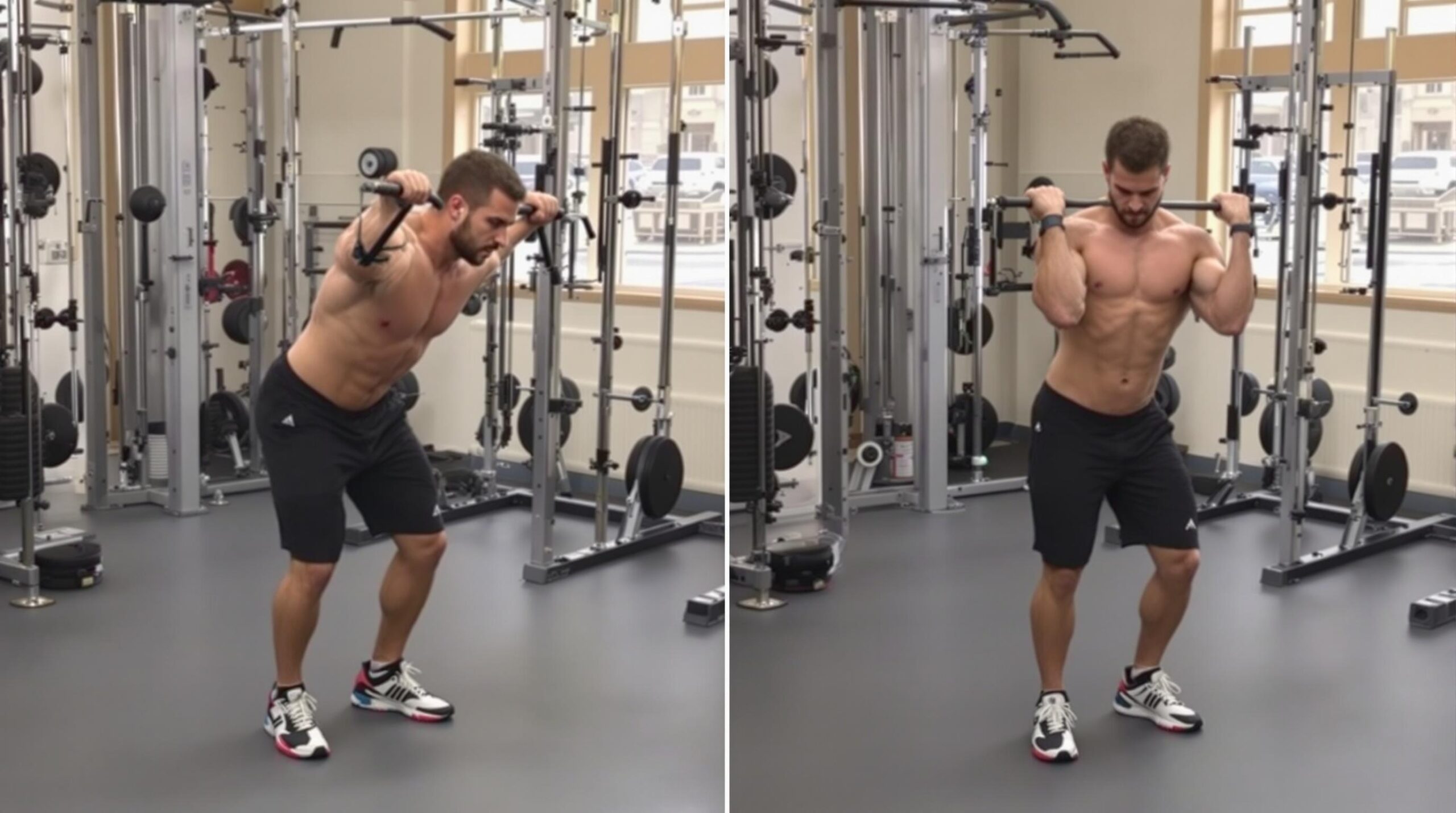Chest dips have stood the test of time as one of the most effective exercises for building impressive pectoral development. The biomechanical advantages of dips for the chest create a unique stimulus that can lead to greater muscle fiber recruitment compared to many conventional pressing movements, making them an invaluable addition to any serious chest training routine.
Key Takeaways
- Proper form is critical for targeting the chest during dips, including a forward lean and wider grip
- Dips activate multiple muscle groups simultaneously, making them highly efficient for upper body development
- Progressive overload through added resistance is essential for continued chest growth
- Beginners should master assisted variations before attempting full bodyweight dips
- Incorporating dips into a well-rounded chest program yields optimal results for muscle size and strength
Understanding Chest Dips: The Anatomy and Mechanics
Chest dips primarily target the lower and outer pectoral regions, areas that many lifters struggle to develop fully. Unlike bench press variations that limit range of motion, dips allow for deeper stretching of the pectoral muscles at the bottom position and complete contraction at the top, creating an ideal environment for muscle growth.
The biomechanics of chest dips involve a compound movement pattern that engages multiple joints and muscle groups simultaneously. When performed with the proper forward lean, dips shift emphasis to the chest while still engaging the triceps and anterior deltoids as secondary movers. This comprehensive recruitment pattern makes dips an exceptionally efficient exercise for upper body development.
Understanding the difference between chest dips and triceps dips is crucial. For chest emphasis, you’ll want to:
- Use a wider grip on the bars
- Lean your torso forward approximately 30-45 degrees
- Allow your elbows to flare slightly outward
- Focus on feeling the stretch in your chest at the bottom position

Proper Form and Technique for Maximum Chest Activation
Achieving proper form during chest dips is essential for targeting the pectoral muscles effectively. Start by gripping the parallel bars with a shoulder-width or slightly wider grip. As you lower your body, initiate a forward lean from the hips while keeping your core tight and maintaining a slight arch in your lower back.
Lower yourself until you feel a deep stretch in your chest, typically when your upper arms are parallel to the floor or slightly below. From this position, drive up by squeezing your chest muscles, focusing on bringing your hands toward each other (even though they won’t actually move). This mind-muscle connection enhances pectoral recruitment during the concentric phase.
Common form mistakes that reduce chest activation include:
- Keeping the torso too upright (shifts emphasis to triceps)
- Excessive forward lean (can stress shoulder joints)
- Incomplete range of motion (reduces stretching stimulus)
- Allowing shoulders to roll forward (increases injury risk)
Progression Strategies: From Beginner to Advanced
Not everyone can perform full bodyweight dips immediately, but several progression options exist for beginners. If you’re new to building muscle and strength, start with these variations:
- Machine-assisted dips (using the dip assist machine)
- Band-assisted dips (looping a resistance band on the bars)
- Bench dips (feet on floor or elevated for increased difficulty)
- Negative-only dips (jumping to the top position and lowering slowly)
As you build strength, gradually reduce assistance until you can perform full bodyweight dips. Once you’ve mastered bodyweight dips for sets of 12-15 repetitions, progress by adding external resistance using a dip belt or by holding a dumbbell between your feet.
Advanced lifters can implement techniques like tempo manipulation (slow negatives), paused reps at the bottom position, or mechanical drop sets for continued progress. These methods create new growth stimuli when regular dips no longer produce results.
Programming Dips for Optimal Chest Development
Integrating dips effectively into your chest training requires strategic programming. I recommend including dips 1-2 times weekly, positioned either as a primary movement early in your workout or as a finishing exercise to fully fatigue the chest muscles after pressing movements.
For strength-focused goals, perform dips earlier in your workout with heavier loading (added weight) for 3-5 sets of 4-8 repetitions. For hypertrophy, moderate weights for 3-4 sets of 8-12 repetitions typically yield optimal results. Those training primarily for muscular endurance might perform 2-3 sets of 15-20 repetitions.
Sample chest workout incorporating dips:
- Incline Bench Press: 4 sets of 8-10 reps
- Weighted Chest Dips: 3 sets of 6-8 reps
- Flat Dumbbell Press: 3 sets of 10-12 reps
- Lower Chest Cable Fly: 3 sets of 12-15 reps
For optimal recovery, allow 48-72 hours before training the same muscle groups again. This ensures proper muscle repair and growth between training sessions.
Complementary Exercises and Full Chest Development
While dips are exceptional for chest development, they shouldn’t be your only chest exercise. Balance your training with complementary movements that target different angles and portions of the chest muscle:
- Incline presses for upper chest emphasis
- Flat bench variations for overall chest development
- Flyes for isolation and stretching the pectorals
- Push-ups and their variations for different angles of stress
This comprehensive approach ensures complete pectoral development without overreliance on any single exercise. Many successful lifters and bodybuilders, including those who have set chest press world records, incorporate dips as a cornerstone of their chest training.
Safety Considerations and Injury Prevention
While effective, dips can place significant stress on the shoulder joint if performed incorrectly. Individuals with existing shoulder issues should approach dips cautiously, potentially using modified ranges of motion or alternative exercises.
To minimize injury risk during dips for the chest:
- Warm up thoroughly before heavy dip training
- Maintain proper shoulder positioning throughout the movement
- Avoid excessive depth if it causes shoulder pain
- Progress resistance gradually rather than in large jumps
- Consider using neutral grip (palms facing each other) if traditional grip causes discomfort
Listen to your body and adjust accordingly. Some discomfort during exercise is normal, but sharp or persistent pain indicates a need to modify your approach or consult with a fitness professional.
Conclusion: Making Dips Your Chest Development Secret Weapon
Dips for the chest represent one of the most effective but often underutilized tools for building impressive pectoral development. By mastering proper technique, implementing appropriate progressions, and integrating dips strategically into your training program, you can leverage this compound movement for substantial chest gains.
Remember that consistency and progressive overload remain the fundamental principles for any successful training approach. Whether you’re a beginner using assisted variations or an advanced lifter adding substantial weight, regular implementation of properly executed chest dips will contribute significantly to your upper body development goals.



